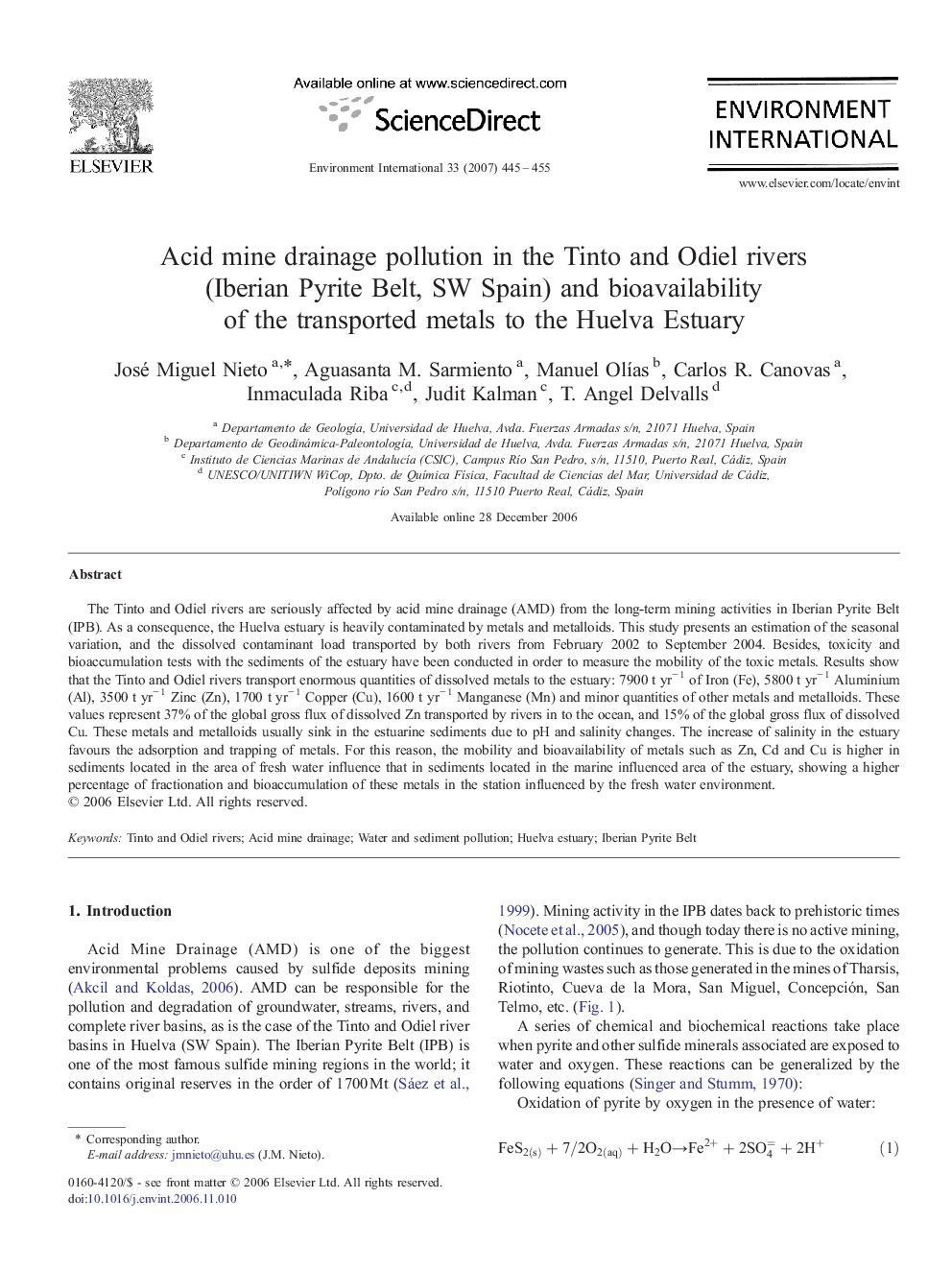| Article ID | Journal | Published Year | Pages | File Type |
|---|---|---|---|---|
| 4423962 | Environment International | 2007 | 11 Pages |
The Tinto and Odiel rivers are seriously affected by acid mine drainage (AMD) from the long-term mining activities in Iberian Pyrite Belt (IPB). As a consequence, the Huelva estuary is heavily contaminated by metals and metalloids. This study presents an estimation of the seasonal variation, and the dissolved contaminant load transported by both rivers from February 2002 to September 2004. Besides, toxicity and bioaccumulation tests with the sediments of the estuary have been conducted in order to measure the mobility of the toxic metals. Results show that the Tinto and Odiel rivers transport enormous quantities of dissolved metals to the estuary: 7900 t yr− 1 of Iron (Fe), 5800 t yr− 1 Aluminium (Al), 3500 t yr− 1 Zinc (Zn), 1700 t yr− 1 Copper (Cu), 1600 t yr− 1 Manganese (Mn) and minor quantities of other metals and metalloids. These values represent 37% of the global gross flux of dissolved Zn transported by rivers in to the ocean, and 15% of the global gross flux of dissolved Cu. These metals and metalloids usually sink in the estuarine sediments due to pH and salinity changes. The increase of salinity in the estuary favours the adsorption and trapping of metals. For this reason, the mobility and bioavailability of metals such as Zn, Cd and Cu is higher in sediments located in the area of fresh water influence that in sediments located in the marine influenced area of the estuary, showing a higher percentage of fractionation and bioaccumulation of these metals in the station influenced by the fresh water environment.
